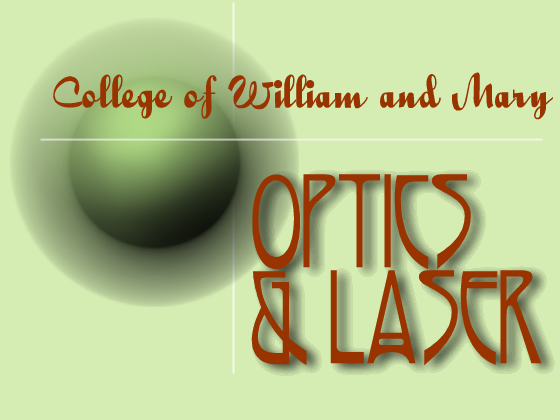
| |
| Home |
| Contact |
| Directions |
| Research |
| People |
| Publications |
| Photos |
| myWM |
Ultrafast Spin Exchange-Coupling Torque |
In this project, optical excitation of spin precession is investigated in Fe/CoO exchange-coupled heterostructure with time-resolved magneto-optic Kerr effect (TRMOKE). Photo-excited charge-transfer processes in AFM CoO layer create a strong transient exchange-coupling torque τex(t) on FM Fe layer through FM–AFM exchange coupling. The efficiency of spin precession excitation is significantly higher and the recovery is notably faster than the demagnetization procedure. The precession amplitude peaks around room temperature and with external magnetic field competitive to the magnetic anisotropy field, indicating that this efficient excitation mechanism originates from the modulation of the uniaxial magnetic anisotropy Ku induced by the FM/AFM exchange coupling. Our results will help promote the development of low-energy consumption magnetic device concepts for fast spin manipulation at room temperature.
The observed ultrafast spin precession excitation is described by a modified Landau–Lifshitz–Gilbert (LLG) equation with an additional torque term:
where γ is gyromagnetic ratio, M is the magnetization, Heff is the effective magnetic field, α is the Gilbert damping constant, τex(t) = -γ(M×△Hex(t)) denotes the instant spin exchange-coupling torque, and △Hex(t) is the change of FM–AFM exchange field Heex by modulation of uniaxial exchange anisotropy Ku. The geometry of instant spin exchange-coupling torque τex(t) is illustrated in Fig. 1.
 |
|---|
Figure 1 | Illustration of photo-excited spin exchange-coupling torque. When t is less than 0, the magnetization M (purple arrow) in the Fe layer aligns along the effective field direction Heff (black arrow). H denotes the external magnetic field, and Hex is the field established by FM–AFM exchange coupling. At t=0, the 400-nm pump pulse (blue arrow) generates photo-excited carriers in the CoO layer, which leads to the reorientation of AFM spins (green arrows). This modifies the exchange coupling, △Hex (brown arrow), causing a change of the effective field direction. Then the exchange-coupling torque τex(red arrow) forms, which triggers the precession of M.
In Fig. 2c the sudden rise and decay of Kerr signal indicates the demagnetization process. Meanwhile, the magnetization starts to precess around the equilibrium direction in a damped circling way described by LLG equation. The measured Kerr signal can be well-fitted by the following equation:
where parameters A, τ, f and φ are the amplitude, magnetic relaxation time, frequency and initial phase of the magnetization precession mainly along the polar direction, respectively.
 |
|---|
Figure 2 | Experimental design and observation of ultrafast exchange-coupling torque. Schematic of TRMOKE measurement geometry, depiction of magnetization precession and longitudinal hysteresis loops (a). Two pump strategies to optically excite the spin precession (b), where the black arrows represent the magnetic moments. Optical charge-transfer transition in CoO is depicted. TRMOKE results from Fe/MgO (black squares) and Fe/CoO (red circles) with pump-pulse intensity 3.1 mJ cm-2, and Fe/CoO (blue triangles) with pump intensity 0.16 mJ cm-2 (c). The solid lines represent fits of equation (2).
Here the pronounced spin precession is observed with much lower pump-pulse energy 0.16 mJ cm-2 at 400-nm wavelength, as shown in Fig. 2c (blue triangles). Moreover, the TRMOKE data reveal the absence of obvious demagnetization and slow recovery of M. Furthermore, the magnetic relaxation time t decreases from 330 ps (red circles) to 100ps (blue triangles) in Fe/CoO with 400-nm pump pulses, which is desirable for fast switching. To determine the origin of the optical excitation mechanism, temperature and field-dependent TRMOKE measurements are carried out (Fig. 3).
 |
|---|
Figure 3 | Temperature and field-dependent TRMOKE studies. TRMOKE results from Fe/CoO at different temperatures T (a), where the solid lines are fits of equation (2). Spin precession amplitude A (black squares) and frequency f (red circles) as a function of H (b). The solid lines are simulations. The arrows indicate the proper y-axis for the different plots (b,c). Temperature dependence of f for two different fields (c). The derived Ku/MS is also plotted (blue triangles) and linked with spline cubic analysis fitting. Temperature dependence of A for two different fields (d), where solid lines represent simulated results. Error bar of A is estimated by the deviation of fitting with equation (2).
For the ultrafast spin exchange-coupling torque, the carrier excitation is instant on photo-excitation, thus the AFM modulation is fast. In addition, the exchange interaction between Fe FM spins and CoO AFM spins are very strong and the modulation of this exchange interaction is fast. Among the magnetic interactions, the spin exchange-coupling interaction has the largest energy and thus the shortest time scale. This process is also repeatable many times without any thermally induced degradation. Larger magnetization precession may be obtained with shorter wavelengths, thereby enhancing (reducing) the absorption in the CoO (Fe) layer, which will also lower the thermal load (larger heat capacity of CoO) allowing the application of higher pump-pulse power.
References:
- X. Ma, F. Fang, Q. Li, J. Zhu, Y. Yang, Y. Z. Wu, H. B. Zhao, and G. Lüpke, Ultrafast spin exchange coupling torque via photoexcited charge transfer processes, Nat. Commun. 2015 Oct 28;6:8800. doi: 10.1038/ ncomms9800.
Funding: DOE
|